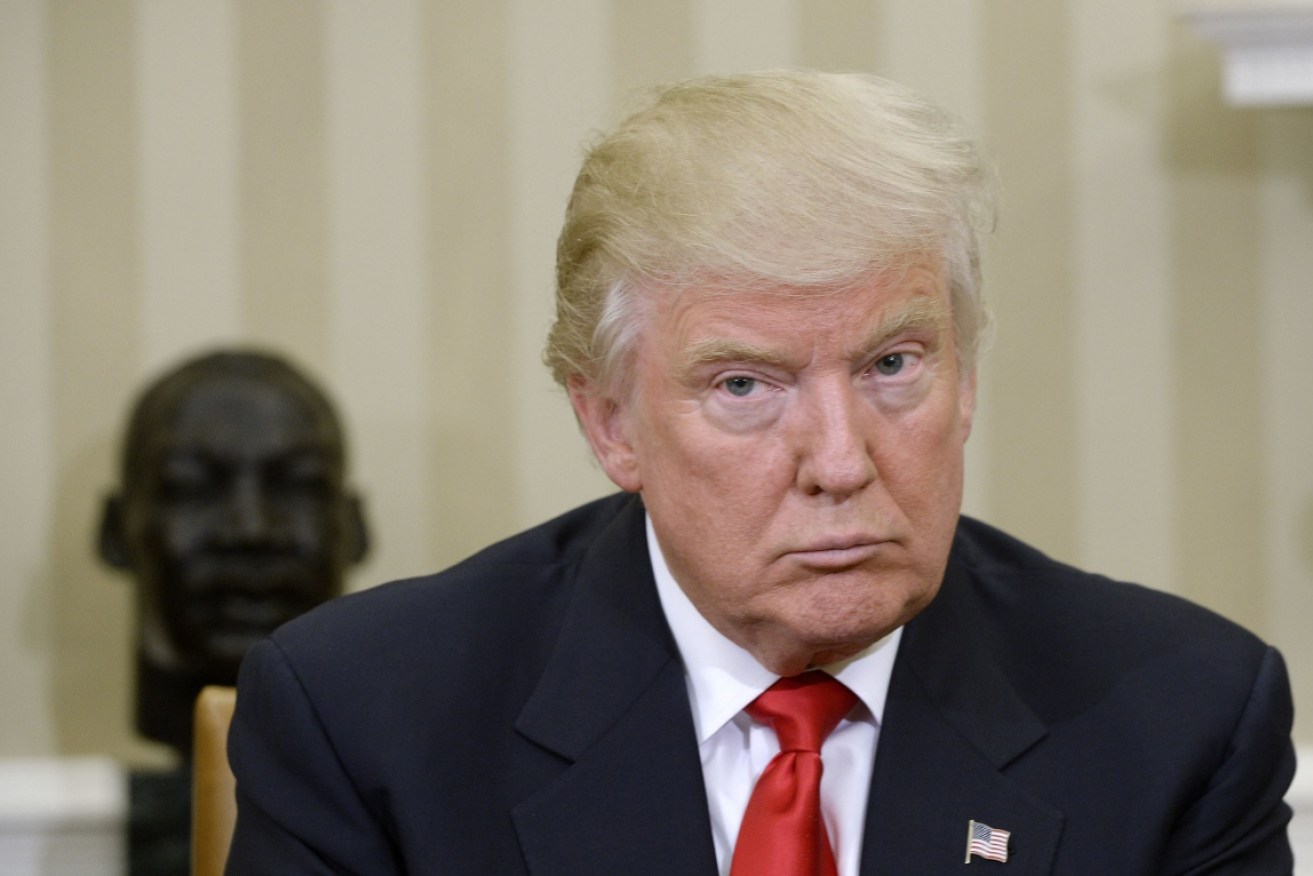If you think a Trump can’t rise here, you’re wrong


Trump all fired up about The Apprentice. Photo: AAP
To work out whether a Trump-style political rupture can happen in Australia, you only need two things.
The first is a basic understanding of the economy, and the second is a bit of distance from the politicians and media figures telling you everything’s going swimmingly.
Australia is in the midst of a huge transition, the ill effects of which are being played down by politicians and most news media.
As the chart below shows, real unemployment has broken free from the trend headline rate in a way not seen since the early 1980s.
Many younger voters will not remember the 1982-83 recession, but it was twice as long as Paul Keating’s 1991 “recession we had to have”, and far deeper.
This columnist remembers coming home from school to ask Dad, week after week, “have you found a job yet?” The problem then was all-out joblessness.
This time, the divergence in the two lines on the chart has a lot more to do with under-employment.
The red line above shows what the headline unemployment rate would be if the same average hours were being worked in each job, and if the participation rate remained constant.
The chart, circulated by Macquarie Bank to clients last week, tells a story of disenchanted workers giving up searching for work, and of the growing part-time workforce.
The credit problem
What makes this more alarming is the rise in private debt over the same period.
While the US has scaled back on private debt since the global financial crisis – from 170 to 150 per cent of GDP – Australia has headed in the other direction.
Australian private debt fell from 200 per cent to 190 per cent of GDP at the start of the financial crisis, but has since rocketed back to 225 per cent.
This, says ‘debt deflation’ economist Steve Keen, will mean “Australia will fall into a prolonged recession” in 2017.
It has been the strategy of both the Rudd/Gillard and Abbott/Turnbull governments to encourage this process – through the 2009 first home buyer grants, through maintaining high levels of immigration without addressing dwelling supply constraints, and by refusing to dismantle subsidies paid to property investors.
In the same period, the Australian Prudential Regulatory Authority was too late in tightening lending requirements to prevent this debt build-up, and the Reserve Bank fuelled the bubble with record lows rates.
It’s not just the economy
The shock of the Donald Trump victory was not just about America’s economy – it was a backlash against a political class and news media working together to tell Americans that ‘everything is okay’, while all new wealth generated since the GFC was being pocketed by the ‘1 per cent’.
A similar tension between ‘the news’ and the ‘lived reality’ is apparent here too – audiences are getting a distorted picture from news outlets whose main revenue sources are the real estate and housing finance industries themselves.
Instead of running stories about how to get rich quick through property, the headlines should scream that huge numbers of young adults have no prospect of buying or paying off their own home.
Rather than toeing the line on ‘strong GDP growth’ and ‘low unemployment’, headlines should stay with the high levels of youth joblessness, and the trend towards unstable and part-time employment.
And instead of telling retrenched auto workers, miners, or the army of unemployed youth that they just need to get a good job, somebody needs to articulate exactly how and where.
Punish the poor
The Abbott government sent a clear message with the 2014 budget that being unemployed was the fault of the jobless themselves.

Tony Abbott’s 2014 budget sought to make unemployed youth wait for welfare.
That hasn’t changed much – less than a month ago, the Turnbull government was still trying to pass legislation to make young jobseekers wait a month for Newstart benefits.
And remember former treasurer Joe Hockey telling young Australians that it’s never been more affordable to take on huge debts? Crazy stuff.
Just like Hillary Clinton in the days before the presidential election, the government is hiding the real post-mining boom picture behind headline figures that don’t tell the true story.
Labor smells blood
At Labor’s Victorian State Conference on Sunday, Opposition Leader Bill Shorten seemed to think he might be the next Trump.
He described with previously unseen gusto how Labor is shifting to more protectionist economic positions – “build Australian, buy Australian, employ Australian”.
But will voters buy that when the next election rolls around?

One of Germany’s newspaper’s response to Donald Trump’s victory.
It was Labor, remember, that first fanned the post-GFC credit explosion, and that boasted of strong economic growth when it knew full well what lay beyond the mining boom peak of late 2011.
If Mr Shorten wants to ride the Trump-wave, the penny will have to drop that the US story wasn’t just about the economy – it was about the political class and the news media of telling voters everything’s okay, when lived experience says it’s not.
If the major parties can’t find the honesty to say ‘Australia’s not working’, voters will turn to whichever ‘Horror-clown’ stands up and says ‘let’s make Australia great again’.
To read more columns by Rob Burgess click here.









